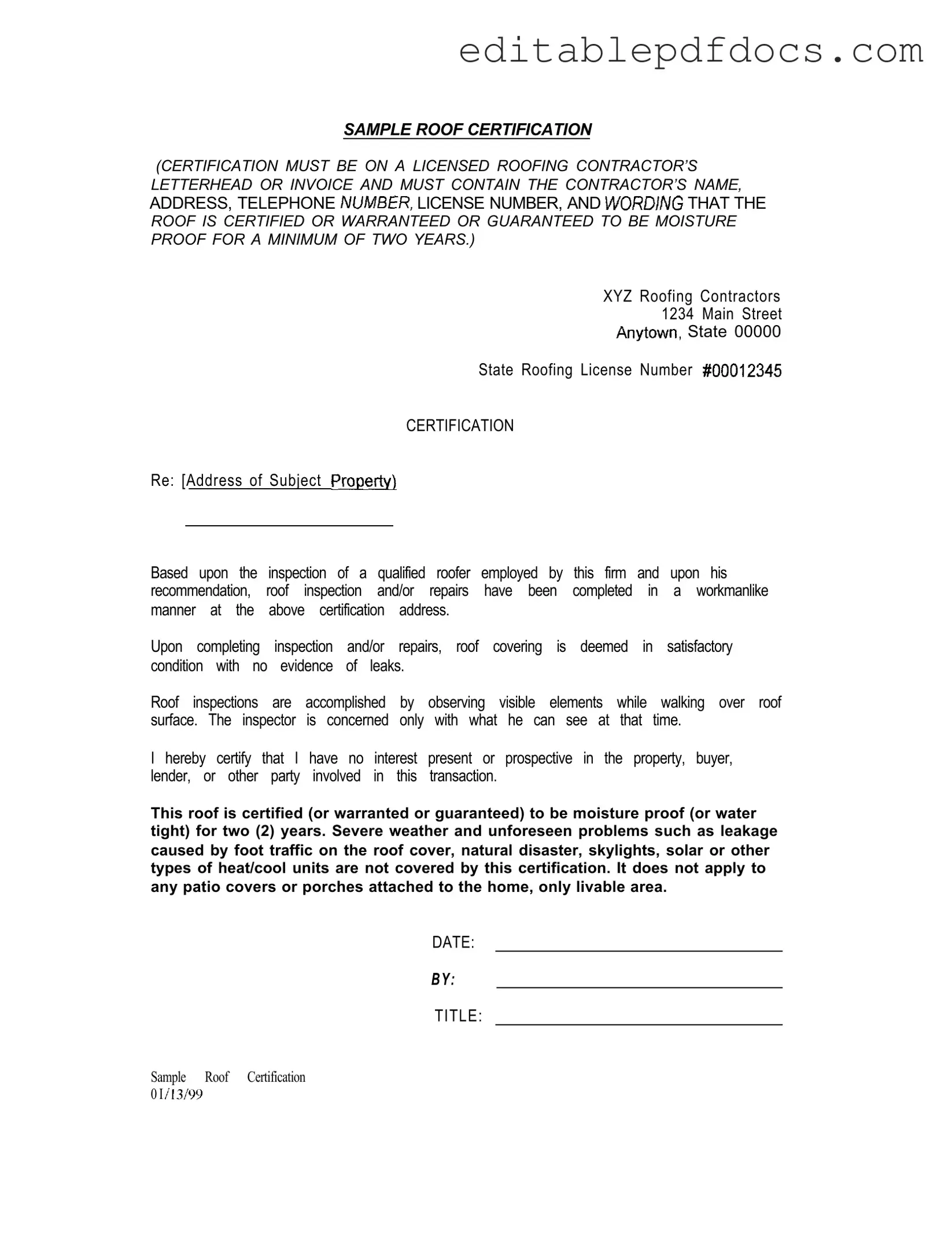Filling out the Sample Roof Certification form can seem straightforward, but many individuals make common mistakes that can lead to complications down the line. One frequent error is failing to use the proper letterhead. The certification must be on a licensed roofing contractor’s letterhead or invoice, which provides legitimacy to the document. Without this, the certification may be deemed invalid.
Another common mistake is omitting essential information. The form requires the contractor’s name, address, telephone number, and license number. Missing any of these details can create confusion and may result in the certification not being accepted by banks or insurance companies.
Many people also neglect to include the specific wording that indicates the roof is certified, warranted, or guaranteed to be moisture-proof for at least two years. This language is crucial, as it defines the scope and duration of the certification. Without it, the document lacks clarity and may not provide the intended assurances.
Another area where mistakes often occur is in the address of the subject property. It is vital to accurately state the property’s address where the inspection took place. Errors in this section can lead to disputes about which property the certification pertains to, complicating future transactions.
Additionally, individuals sometimes overlook the inspector’s qualifications. The form states that the inspection must be conducted by a qualified roofer employed by the firm. If this requirement is not met, the validity of the certification can be questioned.
Some individuals also misunderstand the limitations of the certification. The form explicitly states that severe weather and unforeseen issues, such as leaks caused by foot traffic or natural disasters, are not covered. Failing to understand these limitations may lead to unrealistic expectations about the warranty.
Another mistake involves the signature section. The form requires a signature along with the title of the person certifying the roof. Omitting either can render the certification incomplete. It is essential to ensure that the person signing has the authority to do so.
Moreover, the date of certification is crucial. Some individuals forget to include the date, which can lead to confusion about when the certification begins. This date is important for tracking the two-year warranty period.
People often fail to read the entire certification thoroughly before submission. Misinterpretations can lead to mistakes that could have been easily avoided. Taking the time to review the document ensures that all information is accurate and complete.
Lastly, some individuals may not keep a copy of the certification for their records. This can be problematic if questions arise later about the roof’s condition or the terms of the certification. Retaining a copy is essential for future reference and accountability.
